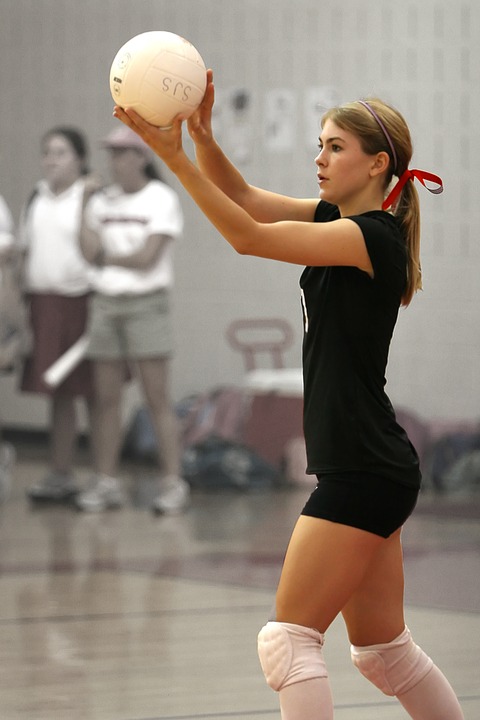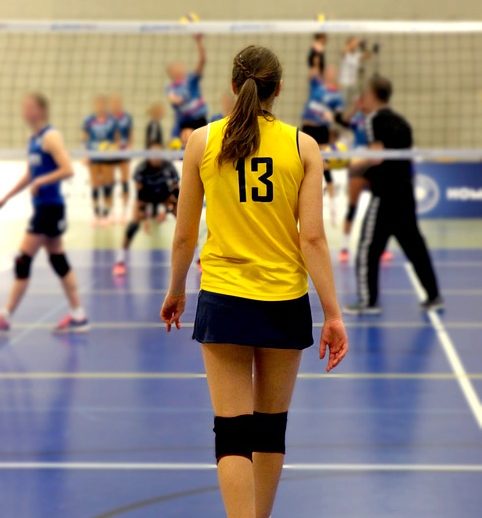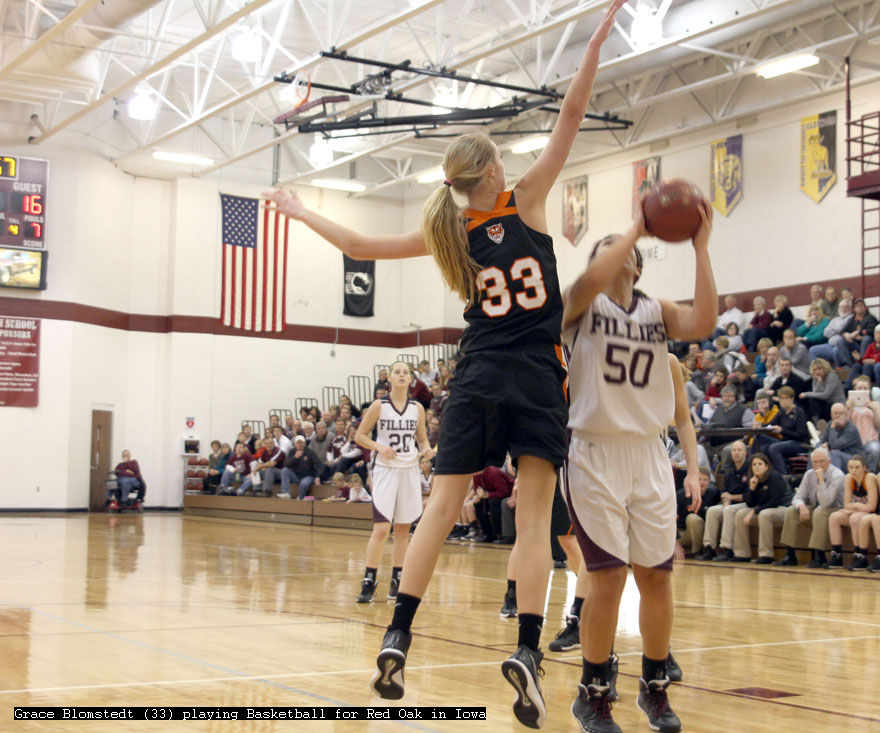Everything You Need to Know about NAIA’s Women’s Volleyball
It may be early in 2018, but everyone is talking about the big prospects this year in college women’s volleyball. Some of the hottest contentions exist in the National Association of Intercollegiate Athletics (NAIA) Women’s Volleyball Programs. Volleyball fans all over the world keep their eyes close on NAIA schools and everyone has an opinion. But it’s been like this since 1980, when NAIA opened sponsorship for tournaments in this great sport.
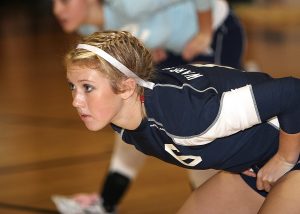
This article will not provide a definitive answer or projection on what team will win this year’s tournament. It will tell you why the NAIA women’s volleyball league is such a great athletics league to watch. You will learn the names of the big statistical winners of the past year. You will see which of the teams have been the traditional big winners in NAIA women’s volleyball.
But to understand what makes this association so special, we have to start at the beginning. So let’s look back on the history of NAIA’s women’s volleyball programs and see exactly where this exciting competition came from.
The Roots of NAIA’s Women’s Volleyball Program
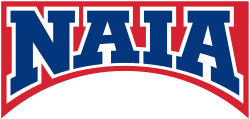
NAIA was formed in 1940, following the efforts of Dr. James Naismith to host what was the first National College Basketball Tournament in Kansas City in 1937. What most don’t know is that this tournament happened one year before the first National Invitational Tournament and two years before the first NCAA Tournament. The primary goal of this tournament was to establish a way for small colleges and universities to determine a national basketball champion, which would naturally facilitate NAIA volleyball rankings.
The effects of this tournament created what was originally, NAIB, or the National Association for Intercollegiate Basketball in Kansas City, Missouri. It wasn’t until 1952 when the association came to sponsor other sports such as men’s golf, tennis, and track and field, which necessitated the name change to what is now known as NAIA.
But national tournaments isn’t the only thing that NAIA was recognized as the first to do. As the association would later open their postseason games to black student-athletes in 1948 with John Wooden, a coach from Indiana State becoming the first coach to bring an African-American student athlete to play at the national tournament.
In 1948, the NAIB became the first national organization to open their intercollegiate postseason to black student-athletes. That same year, Indiana State coach John Wooden, later to become a coaching legend at UCLA, brought the first African-American student athlete to play at the national tournament.
But the story of volleyball within NAIA starts around 1969. Later, NAIA would become the second coed national athletics association to sponsor intercollegiate women’s championships in 1980 by offering support for competition in several women’s divisions in sports such as basketball, gymnastics, tennis, and of course, volleyball. The NJCAA had edged them out by establishing a women’s division in spring of 1975 with the first tournament happening that fall.
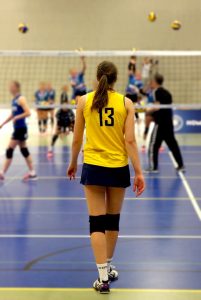
One interesting thing to note about this is that the women’s volleyball division has since taken off and overtaken prominence with many analysts considering the men’s volleyball division as recognized but unofficial since about 1999.
But what does this all mean?
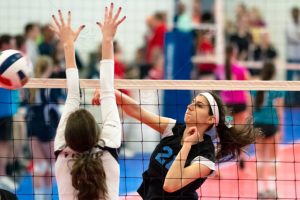
Ever since NAIA has opened it’s sponsorship to other sports, some sports have come and gone from support. But the women’s division of Volleyball remains as one of the clear winners and success stories. Because not only have these schools remained a source of some of the tightest games that volleyball fans have ever seen, but many of the best schools gain enough prominence that they graduate to the NCAA divisional structure.
The annual NAIA women’s volleyball tournament race leads to great triumphs, surprising upsets, and some of the most renowned star players. With this long and storied history, is it any surprise that NAIA Volleyball has clear records on who their best programs belong to?
All this information has led to NAIA creating a concise and clear list of their strongest and most winning programs through the 2017 season. So let’s explore…
The All-Time Top 25 NAIA Volleyball Teams
The list below comes directly from the NAIA website and is clipped to show only the top 25 teams. The bolded teams list active athletics programs and include games for and against four-year collegiate NAIA schools.
What’s interesting is that we can see that age of the athletic program does not directly as the most winning program, Columbia, is relatively young having first entered the annual tournament in 1983, being 8 years younger than the second place program, Taylor. But both of these collegiate programs have won nearly a quarter more games than King, who rounds out the list at number 25.
What we can see from the chart below is that the rankings are based purely on wins rather than percentages to create a fairer method of ranking. The reason for this is based on pure mathematics as younger teams are far more affected by their win/loss ratio than older teams.

The interesting thing to note about this list is that it only captures part of the story, as it seems to exclude athletics programs that were a part of NAIA and have since left the association to join NCAA. Programs such as BYU-Hawaii are not present on the list, even though records show that the university has won the most NAIA championships with 10 of all the championships that NAIA has sponsored since it opened support for women’s volleyball. That is over 25% of all NAIA championships, won by a single athletics program.
But to be sure, the programs listed in the chart above have earned their spots. As they feature some of the strongest players the game has known. But even with the strengths of these programs, we have seen some surprising turns.
Take for instance the results of the 2017 tournament season.
Currently the champions are Lindsey Wilson, who took the title away from Hastings this past fall. This came after Hastings won their inaugural national title in 2016. What is amazing about both of these years of competition is that until the season was well under way, many analysts were heard to say that these were not the programs to watch.
So as we get closer to the 2018 season this coming fall, it will be interesting to see what programs provide real competition against these other teams. Will Lindsey-Wilson manage to hold on to their title? Will one of NAIA’s winningest programs bring the title back home? Or will we see an unexpected team rise up and claim it for themselves?
What affects annual projections?
Whatever happens, it’s clear that volleyball analysts and enthusiasts will be measuring the data to offer their projection of the 2018 season. These projections will include not only the effects of replacing seasoned graduating seniors with raw freshman talent, but also with the strengths and weaknesses of their teams, programs, and coaches.
To understand how much work goes into creating these projections though, you have to understand the NAIA volleyball stats stats that coaches and fans study and understand what they mean.
Statistics and What NAIA Looks at
A search on the NAIA page for women’s volleyball shows that they categorize program-wide statistics with several different statistics. These statistics refer to the facets of play that most quickly translate into points which leads players to get wins. Let’s look at what these statistics are and what they mean.
Hitting Percentage
It’s not hard to guess why Hitting Percentage is one of the most important stats when it comes to ranking teams and offering more accurate projections of future winners. What you might not know is how the stat is calculated. The way to do it is to take the total amount of kills, subtract hitting errors, and dividing that number by the total number of attempts.
In other words, if a team makes 100 kills in a season, but is called for 7 violations (lifting the ball rather than hitting it, for instance) and made 160 attempts, then they will have a hitting percentage of about .581.
Now this would be considered an exceptional average, except it’s also unrealistic, as the hit percentage leader in the 2017 is Grace Blomstedt from Lindsey Wilson with a percentage of .463 scoring 286 kills, 38 errors, out of 536 attempts.
Kills
Kills are the simplest stat to understand. These are the legal point-scoring plays, which are done when an attack cannot be returned by the opposing team. Currently, Dordt’s own Ema Altena leads the rankings of Kills with 658 kills and a K/S ratio of 4.4.
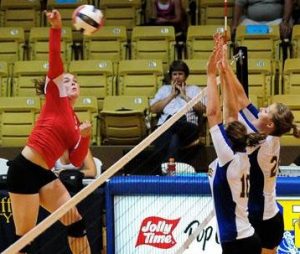
This compares with the Kill/Set rankings, which is currently being led by Janessa MAST of Warner Pacific with a K/S average of 5.1.
Assists
Assists are scored by players who either passes, sets, or digs the ball to teammates that lead directly to kills. Although these players may not receive as much media coverage as kill leaders, it’s these unsung heroes who help propel their teams to the top of the charts.
For that reason, NAIA is proud to report that in 2017, the assist leader was none other than Maddie SQUIERS fowho has scored 1683 assists for Bellevue, leading to an Avg/S of 10.6. Amelia Grahn from Viterbo tops the Assists/Set rankings with an average of 11/.7, with 141 Sets out of 1642 assists.
Service Aces
Serves that lead directly to points are called Service Aces. The way this works is that a serve has to strike the opponents side or cannot be returned and kept in play. Alternately, this is when a serve ends up with a violation called on the receiver for lifts of double hits or any other receiver out-of-rotation violation.
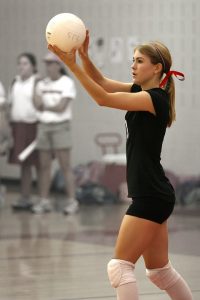
The current leader in the 2017 Division I NAIA conference is Karsyn Winterfeld from Northwestern (Iowa) who has scored 87 Service Aces for an average SA/S of .7 .Natie Manalo from Fisher (Mass) scored 52 Service Aces for an SA/S of .8 which places them as the division leaders in service aces/set.
Blocks
Blocks are credited when a player blocks the ball onto the opponent’s court. For records to be kept, these blocks have to directly lead to points or side outs as when the ball remains in play, the statistic is not kept. Additionally, team blocks are calculated by adding all block solos (When the player is the only one participating in a block) to half of the number of block assists.
NAIA has recorded that Nyssa Baker from IU Kokomo is the current Block leader with an amazing 48 solo blocks and 168 assisted blocks, giving her an 216 total.
Unlikes many of our other records, Nyssa Baker also holds the leader title for Blocks/Set, in both cases scoring nearly double the block or block assists in their respective categories.
Digs
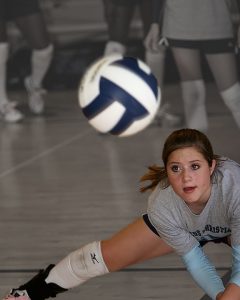
Digs are stats awarded when defensive players successfully passes balls that are determined to be an attack by an opponent. In other words, when a player connects with a ball and denies an attempted kill, then it’s a dig.
What’s interesting to note is that this is a purely defensive statistic. So there are circumstances where plays are not credited with a block or dig. For instance if an attack is deflected by one player but is kept in play by a second player on the defending team, the second player is credited with the dig.
Paulina Hileman of Union (Ky) is recognized as the current stat leader in Digs, having scored 895 digs in 2017. Cristina Viera from Peru State (Neb.) is awarded the leadership title for Digs/Set with an impressive 828 recorded in total.
So who’s going to win in 2018?
Even with all of these statistics and the information on what teams recruited which players, it’s difficult to even remotely predict the superstars for the upcoming 2018 season. All we can guarantee is that if you follow the NAIA tournament season closely, you’re just about guaranteed to be able to enjoy some of the tightest competition from some of the most talented players around.
Whether you have your eyes on the rookies coming in from their volleyball camps and high school competitive leagues or if your focus are on the seasoned seniors entering their last year of competition, analysts can only speculate on who will rock the charts.
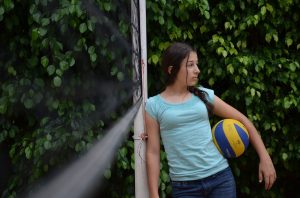
Especially when you consider how many institutions are participants in the 2017-2018 season.
According to NAIA’s lists, there are 220 participants at present. This includes institutions who sponsor the sport but does not participate in NAIA postseason play, first year members who are not eligible for postseason competition, and Associate members who are also not eligible for postseason competition. While we could not possibly give each of these institutions proper coverage in this single article, you are encouraged to check out the list for yourself at NAIA’s website at this address.
So instead, we are going to look at some of these special case teams that you won’t be able to find in the NAIA postseason.
Associate Members
According to the list linked above, the only institution that is an associate member is the University of the Virgin Islands. They participate as part of the Association of Independent Institutions conference, and women’s volleyball joins other women’s sports such as Basketball – Div I, Cross Country, Outdoor Track and Field, and Soccer.
You can learn more about this university at their website.
First Year Members
We have three institutions that are first year members in NAIA and these are Rust College from Holly Springs, Life Pacific College from San Dimas, as well as Florida College from Temple Terrace. It will be interesting to see what effect these three programs will have on the rankings this year, as some enthusiasts are curious to see if the next sleeper hit program will come from one of these universities.
These three institutions all play for different conferences. So if you want to watch Rust College, you will want to pay attention to the Association of Independent Institutions. Life Pacific College will be a part of the Golden State Athletic Conference. While Florida College will be competing alongside other teams in the Southern States Athletic Conference.
Regardless of how well they do, we urge every Volleyball fan to keep their eyes on these teams to see the new talent that has entered NAIA sponsored tournament play.
Institutions that do not participate in Postseason play
There are two women’s volleyball programs that sponsor NAIA play but do not participate in postseason play. The reasons for this refusal to participate have not been found at the time of writing, but it will be interesting to see how well they perform without the benefit of a schedule of play that other NAIA participants have under their belts.
These institutions are the University of Maine at Fort Kent and Kentucky Christian University who are all a part of the Association of Independent Institutions alongside Rust College and the University of the Virgin Islands.
Who Do You Think Will Win
With everything that we’ve looked at, it’s easy to see why NAIA’s Volleyball Tournament race is one to watch. So take a look at the stats from NAIA and see if you can guess who’s coming out on top this year.
